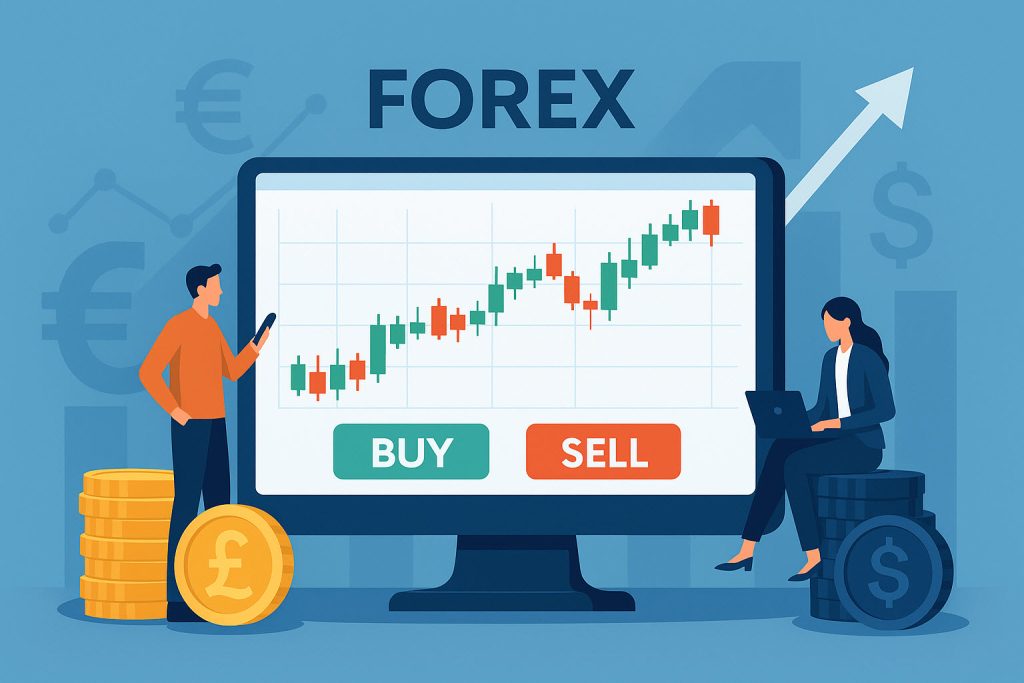DMA Forex Brokers
Direct Market Access, or DMA, is a model that allows traders to interact directly with liquidity providers without interference from a dealing desk or price manipulation. Unlike the traditional market maker model—where the broker sets the bid and ask—DMA brokers provide raw pricing from the underlying market. This results in tighter spreads, faster execution, and greater transparency.
For forex traders, particularly those working with high-frequency strategies, algorithmic tools, or large volumes, DMA isn’t a luxury. It’s a necessity. When every pip matters, the ability to see live market depth, place orders without slippage games, and avoid artificial price filtering can be the difference between profitability and frustration.

Contents
The Appeal of DMA for Experienced Traders
DMA brokers operate using technology that plugs into a network of Tier-1 liquidity providers, including banks and institutional market makers. Instead of routing your orders through an internal dealing desk, DMA brokers send them directly to this pool. You get execution at market prices with no re-quotes, no last-minute price shifting, and no conflict of interest. The broker isn’t taking the other side of your trade—they’re just charging a commission to process it.
This model is especially useful for traders using breakout strategies, those who trade during high-volatility events, or anyone relying on fast market entries and exits. The ability to monitor market depth also makes it possible to anticipate order flow changes and price behavior more accurately—something that’s simply not visible through traditional spread-based retail accounts.
Key Differences Between DMA and ECN/STP
DMA is often grouped with ECN (Electronic Communication Network) and STP (Straight Through Processing) models, but there are subtle differences. ECN accounts typically connect you to a network of other traders and liquidity providers where the highest bid and lowest ask define the price. STP brokers route orders to providers but don’t offer market depth visibility. DMA brokers, in contrast, deliver access to Level 2 data—allowing you to see order book depth and volume at each price point.
This level of access is especially valuable for scalpers and traders using precision entries, as it reveals hidden liquidity and potential price resistance levels. It also removes some of the guesswork when it comes to anticipating short-term market movement.
Regulation and Infrastructure Still Matter
DMA doesn’t automatically guarantee trust. Even though the model reduces broker interference, execution quality still depends on infrastructure, regulation, and liquidity relationships. Regulated DMA brokers must meet capital requirements, use segregated accounts, and follow audit guidelines—offering a layer of protection that many offshore or unregulated DMA platforms can’t.
Latency also plays a role. The best DMA brokers have low-latency order routing infrastructure, with servers located close to liquidity hubs like London or New York. They allow the use of FIX APIs, custom integrations, and advanced order types that support institutional-grade trading setups.
Where to Find Reliable DMA Forex Brokers
The DMA broker space isn’t as crowded as the retail forex world. That’s a good thing—it means less noise, but also requires a bit more research to find legitimate providers. For traders looking for a curated starting point, Forex.ke is one of the few platforms that tracks DMA-capable brokers with a focus on execution, commission transparency, and regulatory backing.
Instead of comparing brokers based only on spreads or leverage, the site reviews account types based on actual execution method. That’s exactly the kind of filtering that helps serious traders avoid retail distractions and zero in on platforms that match their strategy.
Final Thoughts: DMA Isn’t for Everyone, But It’s the Right Fit for Some
Trading with a DMA broker is a completely different experience from using a standard retail broker. There’s no dealing desk, no funny business with quotes, and no artificial spread padding. The costs are transparent—usually a flat commission per trade—and what you see on the order book is what the market actually looks like.
That visibility and speed come at a price. DMA accounts often require larger minimum deposits, offer fewer hand-holding features, and assume you know what you’re doing. But for those who do, the model offers a level of control and fairness that few other forex setups can match.
If you’re relying on precision, working with advanced strategies, or simply tired of wondering whether your broker is quietly playing against you, DMA is where the serious trading begins.
This article was last updated on: September 5, 2025

